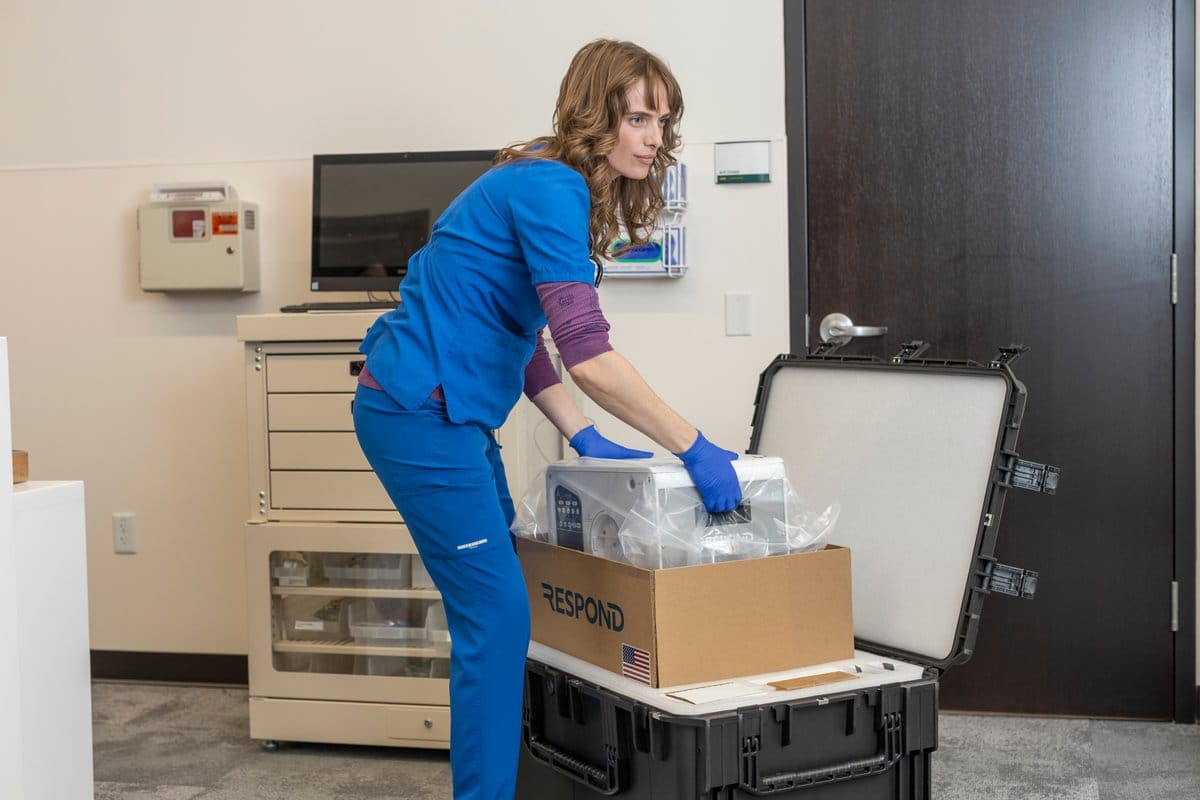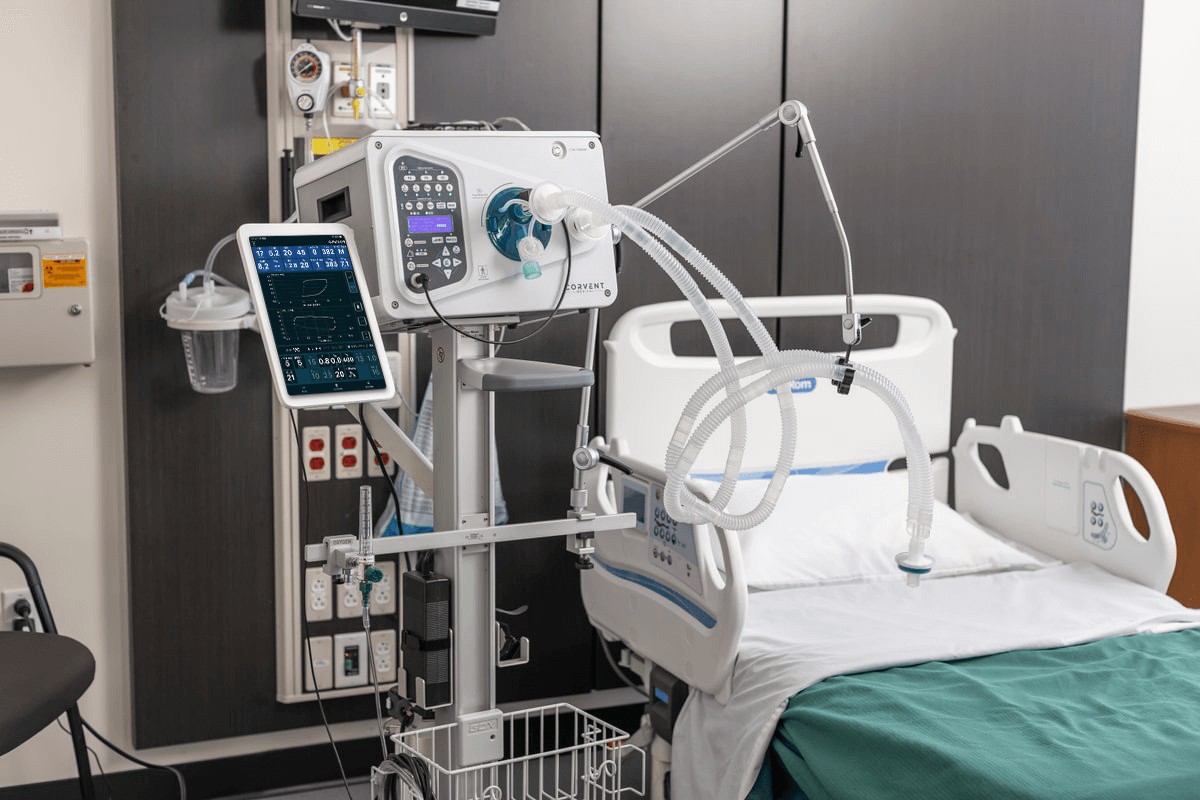The Strategic National Stockpile (SNS) is critical to U.S. preparedness, ensuring lifesaving medical equipment is available during crises. COVID-19 revealed major gaps in ventilator readiness: outdated models, high maintenance demands, and limited clinical capability. Looking ahead, the likelihood of another pandemic is high— estimated at 22–28% in the next 10 years and 47–57% within 25 years. To protect public health and national security, the SNS must invest in ventilators that are clinically capable, rapidly deployable, and specifically designed for long-term stockpiling. A new generation of ventilators—built in the United States with extended shelf life, no recurring maintenance contracts, and critical-care functionality—can reduce costs, simplify logistics, and, most importantly, improve outcomes during the next public health emergency.
The Case for Preparedness
The mission of the SNS is to ensure readiness in the face of pandemics, bioterrorism, or other public health crises. The COVID-19 pandemic alone triggered rapid procurement of over 150,000 ventilators at a cost of $3 billion. However, many of these devices are already nearing the end of their service life, have been recalled, or come from manufacturers exiting the ventilator market. These challenges highlight the urgent need for a sustainable, future-ready solution.
The risk is not theoretical. In addition to natural outbreaks, state and non-state actors continue to pose chemical and biological warfare threats. The U.S. cannot afford to repeat the logistical and operational failures of 2020 when thousands of stockpiled ventilators were either outdated, inoperable, or lacked the clinical capability to support patients.
Lessons Learned from COVID-19
At the onset of the COVID-19 pandemic, the SNS contained only ~19,000 ventilators, many of which were unusable due to lapsed service contracts, dead batteries, or outdated models. Emergency procurement expanded the stockpile to ~150,000 units, but over 80,000 were transport or emergency ventilators that lacked critical care capability. Hospitals faced enormous strain as ICU staff were forced to operate more than 15 different ventilator models—an unsustainable situation in an already overstretched environment. These lessons make clear that stockpile ventilators must be reliable, easy to use, and designed for long-term storage without costly maintenance.
Requirements for Stockpile-Ready Ventilators
- No scheduled maintenance for years in storage
- Full critical care functionality for invasive and non-invasive ventilation
- Rugged, portable design with protective storage cases
- Ease of use with simplified interfaces, reducing training burden
- Non-proprietary parts and external batteries for supply chain flexibility
- U.S. manufacturing and support to ensure resilience and security
The Path Forward
A ventilator designed to reduce complexity and long-term costs while strengthening national resilience is essential. For the SNS, adoption of next-generation, stockpile-ready ventilators would:
- Strengthen readiness for pandemics, bioterrorism, and natural disasters
- Cut hundreds of millions in long-term maintenance costs
- Provide ICU-level care in hospitals and alternate care sites
- Ensure rapid deployment without dependence on proprietary service or consumables
- Reinforce national security by relying on U.S.-based manufacturing and support
Conclusion
Stockpile preparedness is about more than numbers-it is about functionality, reliability, and sustainability. Future-ready ventilators, designed for long-term storage and rapid deployment, provide not just logistical efficiency but also lifesaving capacity in times of crisis. With the high probability of another pandemic within the next two decades, the SNS must act now to ensure the nation is ready. Investing in reliable, low-maintenance ventilators will protect both public health and national security for years to come.





